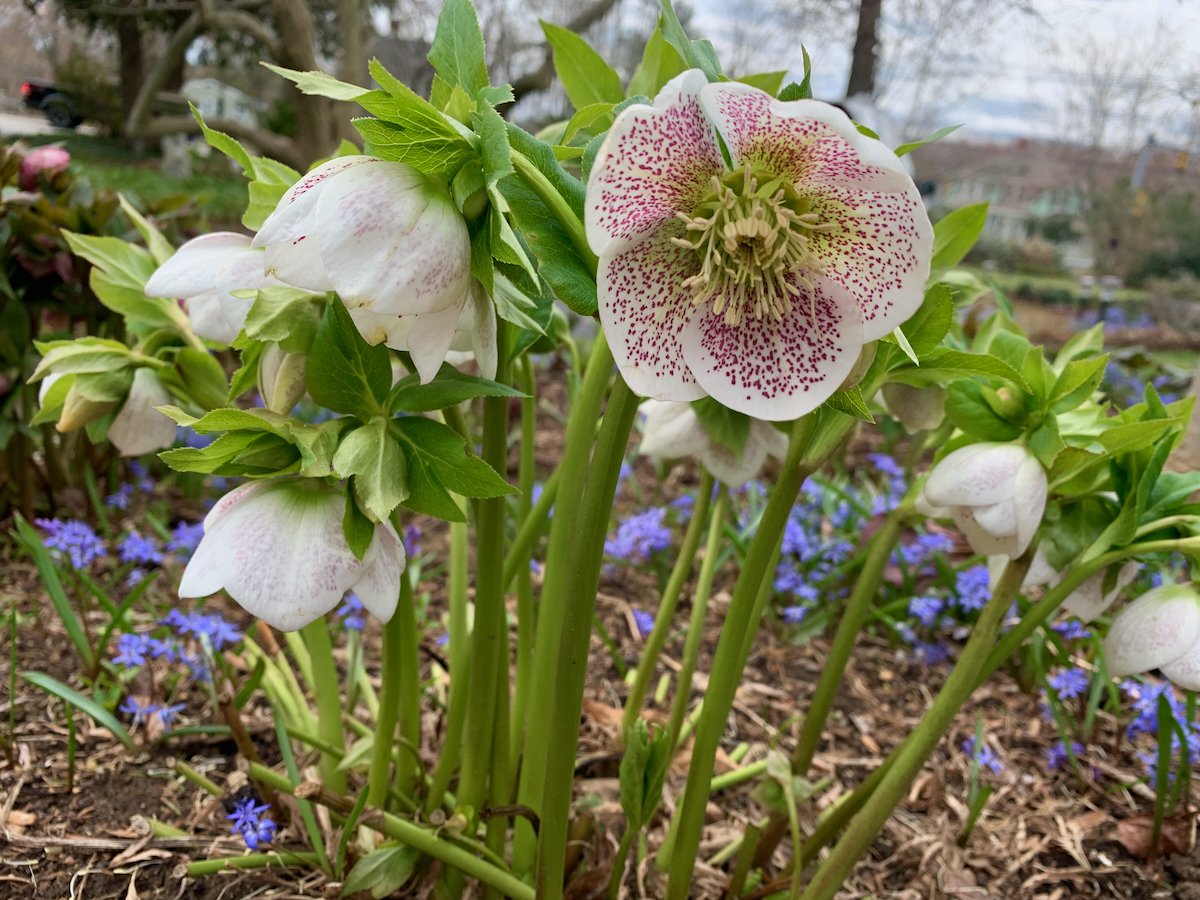Christmas Fern: Fronds in the Snow
/My first introduction to the Christmas Fern came at a garden club flower arranging workshop. Everyone brought greens from their gardens to supplement a ‘supermarket bouquet’, and I was amazed when one of the members produced a mass of shiny, lance-shaped fern fronds. Ferns from the garden in February? In New England? I had to get the name of that fern and add it to my shade garden collection.
As it turns out, the Christmas fern (Polystichum acrostichoides) is not as exotic as I had thought. It is one of the most common ferns in eastern North America, found from Nova Scotia west to Minnesota and south to Florida and eastern Texas. Given its wide range, it is an admirable plant, surviving deep freezes in the North and dry heat in the South. Moreover, throughout its distribution, it's often the most common species. If you want to know the name of just one wild fern, you'll get the most mileage from knowing this one.
Ferns were among the first plants to inhabit the earth. They are more than twice as old as the first flowering plants, and their method of reproduction is very primitive. They reproduce not by seed but by microscopic spores. There are more than 12,000 species of ferns in the world today. Ferns enjoyed huge popularity in Victorian times (the craze was called “Pteridomania”) when they were collected and their image was used to embellish pottery, furniture – everything from christening presents to gravestones and memorials. In New England, the Christmas fern was very popular during the Christmas season for wreath-making and other yuletide decorations – hence its common name. Some also believe that the name “Christmas Fern” came from the shape of the pinnae (individual leaflets), which resemble a Santa’s boot or a Christmas stocking.
Christmas ferns are particularly accommodating garden plants. They are adapted to a wide range of conditions, from very dry to moist, and prefer fertile, humusy, well-drained soil in full to part shade. Once established, they will even survive periods of drought. I was particularly happy to learn that they will grow under mature trees - even Norway maples with their huge, thirsty surface roots. They virtually mulch themselves; old fronds fall to the ground in spring as new fiddleheads emerge. They are resistant to pests and diseases and are seldom bothered by deer. Christmas ferns grow slowly to form dense clumps, which can be divided into several plants in the spring. Given adequate soil and moisture, they will also multiply through spores to form a nice colony.
Christmas ferns grow two to three feet tall, and are easily recognizable in a woodland setting since they are one of the few green plants poking through a blanket of snow. Lush new spring growth begins early, as soon as the winter snows melt. Fiddleheads appear sometimes as early as the mayapples, trilliums and other woodland wildflowers. The new fronds are an attractive silver to light green in color, maturing to deep, glossy green. As the new growth emerges, the old fronds begin to quickly wither away.
I was happy to receive ten healthy clumps from a friend’s lakeside garden in the Hudson River valley. Her garden is set on a steep slope to a lake - a perfect habitat for Christmas ferns, which perform a soil conservation function. Their fronds are semi-erect until the first hard frost, after which they recline to the ground, effectively holding in place fallen leaves so that they become soil on the slope. The ferns can be planted in masses or as single specimens that will contrast in form with other shade-loving perennials such as hostas, lily of the valley, hellebores, bleeding hearts and epimidiums.
For the home gardener, the Christmas fern offers year-round enjoyment, bringing a hint of the lush green forest to the backyard, and an elegant, long-lasting addition to holiday arrangements.
You Might Also Like











